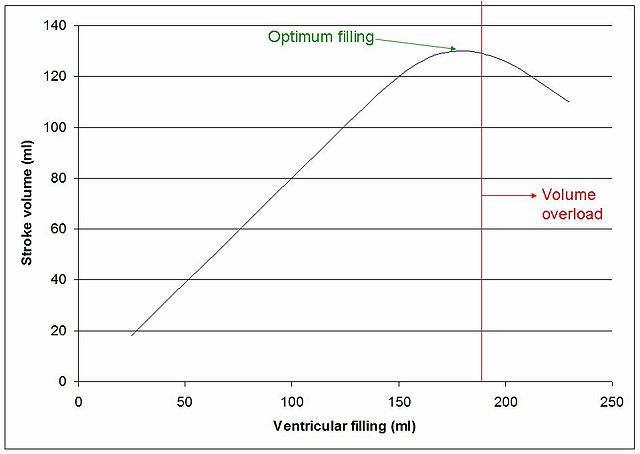Loading AI tools
From Wikipedia, the free encyclopedia
Volume overload refers to the state of one of the chambers of the heart in which too large a volume of blood exists within it for it to function efficiently. Ventricular volume overload is approximately equivalent to an excessively high preload. It is a cause of cardiac failure.[1]

In accordance with the Frank–Starling law of the heart, the myocardium contracts more powerfully as the end-diastolic volume increases. Stretching of the myofibrils in cardiac muscle causes them to contract more powerfully due to a greater number of cross-bridges being formed between the myofibrils within cardiac myocytes.[2] This is true up to a point, however beyond this there is a loss of contractile ability due to loss of connection between myofibrils; see figure.[citation needed]
Various pathologies, listed below, can lead to volume overload. Different mechanisms are involved depending on the cause, however the common theme is that of a high cardiac output with a low or normal afterload. The output may be high due to the inefficiency in valve disease, or it may be high due to shunting of blood in left-to-right shunts and arteriovenous malformations.[citation needed]
Left ventricular volume overload may produce inverted u waves on the electrocardiogram.[3]
Causes may be considered according to which chamber is affected.[citation needed]
Left ventricular volume overload
Right ventricular volume overload
Seamless Wikipedia browsing. On steroids.
Every time you click a link to Wikipedia, Wiktionary or Wikiquote in your browser's search results, it will show the modern Wikiwand interface.
Wikiwand extension is a five stars, simple, with minimum permission required to keep your browsing private, safe and transparent.